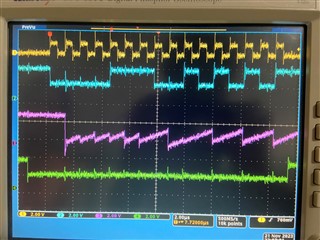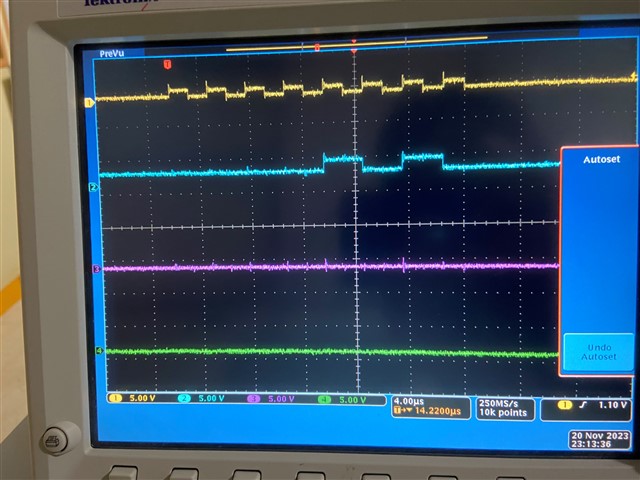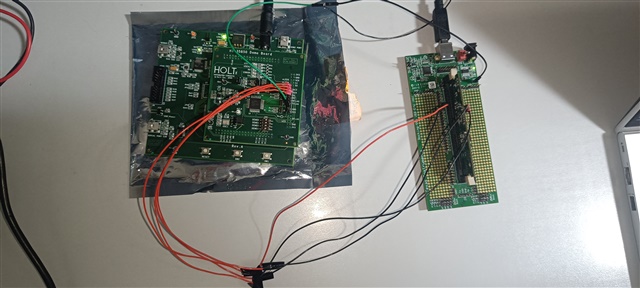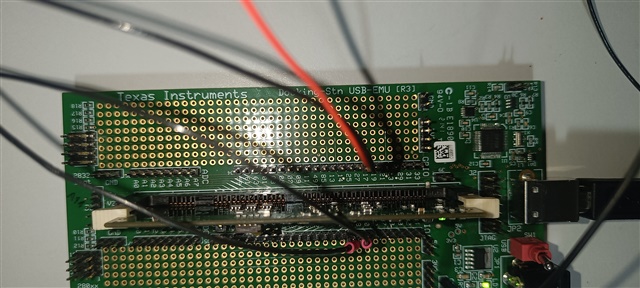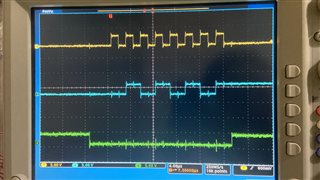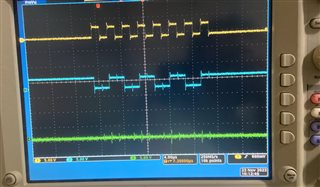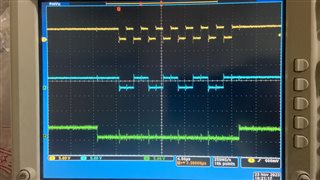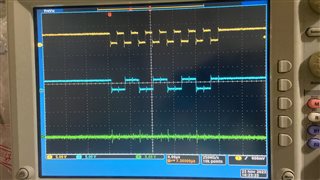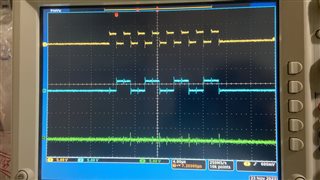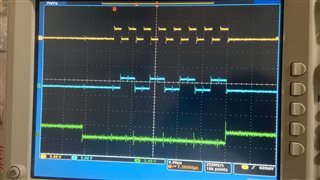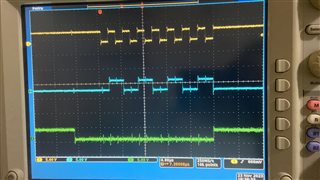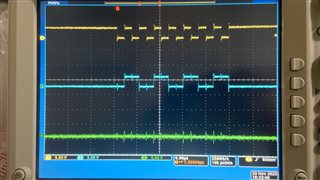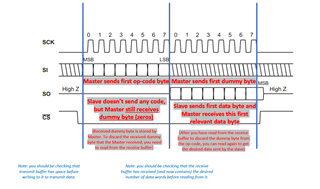We are trying to make a SPI communication in F28335 device, and by sending the data from our TMS320F28335 SPI (MASTER) to external Slave device of HOLT INTEGRATED CIRCUIT HI-35850 (SLAVE) device board.
Here, We have configured the TMS320F28335 SPI device as a MASTER and HI-35850 as a SLAVE.
- For this, we were trying to send the Arinc data which is a 32 bits by 4 iterations, since we have configured SPICCR.bit.SPICHAR for a 8-bit word.
- We have captured and attached as a attachments Waveforms in 4-channel CRO with the SCLK, MISO, MOSI and CS. But we were unable to see more than 16-clocks in the waveforms and the Chip select (CS) was getting de-asserted, but we need 32 clocks for 32 bit and we need your support on this.
- And I had attached my C code below for SPI for this, along with Initialization and configuration in the module name Mcu1_Spi_initialization().
Please visit to my attachments of the Waveforms and SPI code. And kindly suggest me, what need to be corrected.
